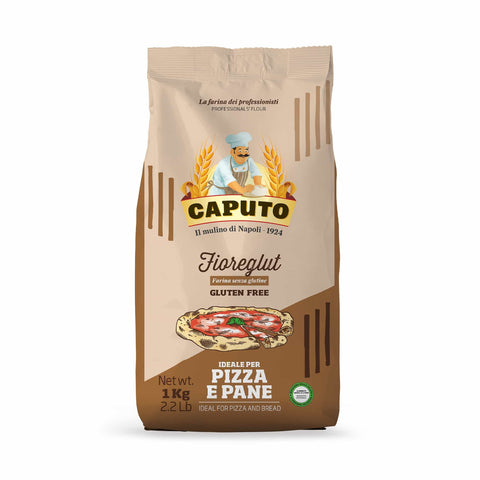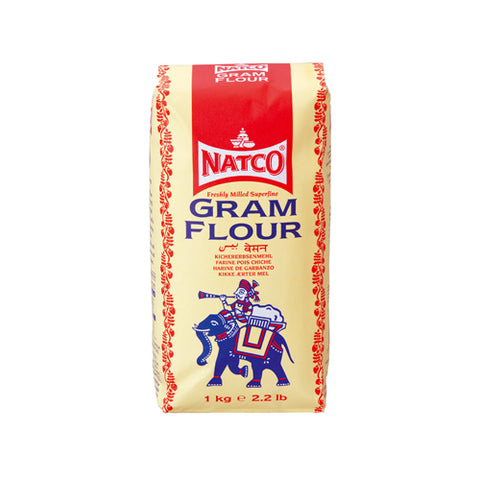The Buyer’s Guide to Gluten Free Flour
by Ellie Edwards

What is gluten free flour?
Gluten is formed naturally when water is added to flours made from wheat, rye and barley. In wheat, gluten is formed when two proteins, glutenin and gliadin come together in the presence of water and form what we recognise as cohesive malleable dough – one which can hold its shape and allows for expansion when gas is produced by the yeast (and sometimes bacteria).
Gluten free flour is a name for flours which aren’t made with gluten products – it is used in place of traditional wheat, rye and barley flours by people who have a gluten intolerance. Gluten free flour can be made from a range of different grains including rice, buckwheat and tapioca. The type of gluten free flour you should use depends on what you’re baking.
How to cook with gluten free flour?

Homemade corn tortillas are a great base for eggs, pulled pork or baja fish. These tortillas use masa harina flour which is naturally gluten free.

Onion pakoras are very easy to prepare – they are made from finely sliced onions, tossed in a spiced gram flour batter and deep fried. Serve with chutney for a gluten free snack.

Niki Webster’s gluten free spiced gram (chickpea) flour crêpes are very quick to make and perfect for dipping or scooping up chutneys, pickles and salad.
Which gluten free flour should I buy?
Best gluten free flour for pizzas
Caputo gluten free flour makes it easy to bake gluten free breads and pizzas at home, without compromising on texture. This flour is a blend of rice and potato starches as well as rice and soy flour. These all-natural ingredients create a white flour that gives pizza bases and flatbreads a soft, light texture.
Best gluten free flour for bread
Doves Farm gluten free white bread flour makes it easy to bake gluten free bread at home. The flour is a blend of rice, tapioca and potato flours. The gluten free white bread flour includes a recipe for a classic white loaf on the packet, with instructions for bread makers as well as baking by hand.
Best gluten free flour for fritters
Superfine gram flour, also called besan, is a widely used flour in Indian cuisine. Gram flour is made from chana dal (an Indian variety of chickpea) which are hulled and split, ground into a fine-textured, yellow-ish, gluten free flour. Gram flour has a subtly earthy aroma and slightly nutty flavour. Use it when making batters for onion bhajis, sweetcorn fritters or dumplings.
Best gluten free flour for tortillas
Masa harina is a gluten free flour made from finely ground corn. In Mexico, masa harina is an essential ingredient for making tortillas. Alternatively, mix this gluten free flour with xanthan gum or guar gum to make gluten free bread, pie crusts and sponges.
Frequently Asked Questions
Can I use gluten free flour in place of regular flour?
Yes, you can use gluten free flour in place of regular flour, however you will need to adapt the liquid in the recipe accordingly. Most gluten free flours are drier and more absorbent meaning you’ll need to add more milk, water or oil, depending on what you’re making. If you’re following a recipe that calls for regular flour, it’s a good idea to try it a few times until you find the correct liquid levels.
Does gluten free flour affect baking?
Gluten free flour is drier and less absorbent than regular flour which can sometimes result in a denser bake than you might be expecting. However, once you adjust your liquid levels in the recipe – using trial and error – you can create a lighter, softer bake. Certain flours produce a naturally lighter bake, in particular Caputo gluten free flour.
It’s also worth following a recipe which has been written and tested using gluten free flour, as different flours will produce different results.
What gluten free flour is best for bread?
The best gluten free flour for a classic white loaf is Doves Farm gluten free white bread flour. It’s a blend of rice, tapioca and potato flours. For pizza bases, we recommend Caputo gluten free flour. The blend of rice and potato starches as well as rice and soy flour creates a soft, light texture.
For baked goods with a touch of rustic charm, buckwheat flour offers a fantastic gluten free option. Its earthy flavour and sturdy texture make it ideal for cakes and biscuits, particularly when combined with other gluten free flours like sorghum flour to balance the consistency.
Many home bakers love its versatility, as it brings a unique twist to both sweet and savoury recipes. For a quick and easy breakfast, try using buckwheat flour to whip up some fluffy pancakes or experiment with polenta for an extra crunch in your bake.
Whether you're looking to bake a classic cake or perhaps try something new with corn flour, the texture and consistency provided by these flours make them a great alternative to wheat flour.
Shop all gluten free ingredients here, and read our guide to gluten free pasta here.

About the author
Ellie Edwards is a food writer for Sous Chef. Previously she worked at olive magazine, writing about exciting new ingredients, UK restaurants and travelling the world to find the best cinnamon buns. When she's not exploring the likes of Belize, Kerala and Zanzibar, Ellie loves rustling up a feast in her London kitchen, with a particular passion for porridge, sourdough and negronis.





